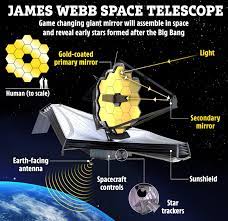In 1609 Galileo Galilei pointed a telescope with a lens no wider than a cucumber slice to the heavens to decipher the moon’s cratered surface. Since then, telescopes have become invaluable instruments in our understanding of the vast, unexplored cosmos. Observations of the night sky sparked new theories of the Milky Way and other galaxies near and far, and so came better devices to test them with. We’ve come a long way adding larger mirrors, coatings, more refined optics, and blasting telescopes into space.
“Astronomy is one of the older fields of study, but for the vast majority of the history of science, we’ve been limited to what we can see with our eyes in the night sky,” says Caitlin Casey, an astronomer at the University of Texas. “The development of the telescope in the 1600s was really transformative, and it allowed us to peer deeper and deeper into the cosmos. That just led to one mystery after another; there are some answers, but more questions.”
More than four centuries after Galileo peered into the cucumber-thin lens, NASA is scheduled to launch the largest, most powerful, and most hotly anticipated telescope ever put into space. For three decades, the public has gotten used to seeing space through the Earth-orbiting Hubble Space Telescope. Billed as Hubble’s scientific successor, James Webb (which has some controversy behind its naming) will be able to track down light from the universe’s infancy, which we know precious little about.
“It’s by far the most complex science mission that we’ve done,” says Lee Feinberg, Webb optical telescope element manager at the NASA Goddard Space Flight Center, who has worked on the observatory’s optics for the past two decades.
Fourteen years behind schedule and 20 times over budget, Webb has faced a lot of bumps on its way to the spaceport in Kourou, French Guiana. (The team pushed back the launch date to December 24 last week due to a faulty data cable.) But after more than a thousand scientists, technicians, and engineers from 14 countries overcame the challenges that emerged in its development, the telescope is finally ready to zoom away in search of “first light,” bringing astronomers closer to the Big Bang than ever before.
Milestones in optics and imaging technology have enabled astronomers to observe a great deal of the universe’s history. But when it comes to understanding how it began, details are still murky.
So far, telescopes haven’t allowed us to peer back far enough to see the universe’s first light, which shimmered off the earliest stars that burst into life. Webb, however, is decked out with the latest technology specifically designed to collect and focus on that faint glow.
Source : https://www.popsci.com/space/james-webb-space-telescope-infrared-light/







